Welcome back, dear reader, it’s nice to have you there – wherever that may be. I’m sorry for the delay since the last post of frazzled travel to Thanksgiving in the paradise of Southern California. That was quite a road trip, wasn’t it? I needed a bit of a break after reliving all of that.
As you may recall, after slipping off the mountain in northern Colorado, out of cold and snow and over roads of ice, then rolling down the barren plains, we came cresting and unrested into New Mexico, pulling a vintage 19’ camper, Cochise, behind a not-quite big enough Nissan Pathfinder, BroBo – The Bronze Bomber.
Following the frenzied trip on treacherous interstates we returned to the peace and quietude of Storrie Lake State Park in Las Vegas, New Mexico, for the winter phase of life as a rubber tramp. From there our journey continues, but I feel the need to do a little backstory for this enchanting place, and I don’t know where to start…
Please bear with me as this might be a little more history than journaling, but I hope it will be helpful in understanding a state so frequently misunderstood and often overlooked. Plus, it’ll help explain the pictures, which tell their own story. I’ll put together a reference index in case you want to dig a little deeper. I hope you do. So…let’s go. Vamonos!
New Mexico’s history is deep and rich in so many ways, from the geological ages of dinosaurs and Neanderthals through the Cro-Magnon and Paleo-Indian periods to ancient and modern tribes of indigenous peoples. Then came the damn European conquerors and settlers, gold-robbers, land-grabbers and exploiters, along with myriad other bandits, outlaws, renegades and vigilantes, right up to 20th Century movie stars and aliens – “illegal” as well as terrestrial – to the present. No other state is quite so unique, with the possible exceptions of Texas and California notwithstanding.
Northern New Mexico is part of the ancestral home to the Pueblo people, along with the Four Corners region where they lived in cliff dwellings that are still evident today. Mesa Verde, Colorado, is well known and amazing, but equally amazing is Chaco Canyon, Bandelier and the Gila Cliff Dwellings in New Mexico. Just don’t call the people who lived there Anasazi, because it’s a Navajo word meaning “Ancient People/Enemy/Outsiders.” The politically correct name is Ancient or Ancestral Puebloans. That’ll show that you’re hip, or whatever the politically correct word for hip is. Hard to keep up…
Pueblo means “town” or “village” in Spanish, and since they conquered most of the Southwestern US, they named many things. To the victors go the spoils, as the saying goes.
But they weren’t just on a naming mission. The Spaniards were primarily concerned with conquering the natives via their horse-riding, metal-armored, sword and Bible-wielding conquistadors whose principal objective was ferreting out the gold and silver of the Inca, Aztec and Mayan civilizations before hacking their way north in search of the fabled Seven Cities of Gold and stealing their plunder back to Spain – for the Empire established by King Ferdinand and Queen Isabella and given self-righteous holiness by the Inquisition.
Their secondary mission was converting the “pagans” to Roman Catholicism and – if that didn’t work –annihilate them without discretion. Mostly, though, it was about absconding with the riches and hustling it back to throttle the Empire’s global expansion and adorn the royal palaces and churches with more gilded opulence.
Let’s face it, though, Ferdie and Lizzy and their ilk needed more gold and silver like Al Pacino’s character (Tony Montana) needed more yayo (cocaine) at the end of the movie Scarface. But, I digress…
The word pueblo refers to the adobe buildings prevalent then and now, with the biggest existing example being the Taos Pueblo. That area is a great place to start exploring this amazing part of our planet. Definitely should be on your bucket list if you’re interested in visiting the Southwest.
The next group of indigenous peeps were the Athabaskans who came over the land bridge from Siberia during the Ice Age and kept going south – the original Snowbirds. They’re now known as the Navajo and Apache and have been forced onto reservations after considerable confrontation with the US Cavalry following the Civil War, but that victors/spoils thing comes into play again.
The Long Walk of the Navajo (and Apache) to Bosque Redondo in New Mexico was the southwest equivalent of the Trail of Tears (of the Cherokee, Muskogee, Seminole, etc.) from the southeast to Indian Territory in Oklahoma. The US government just called it Manifest Destiny. Very few white citizens really gave a damn. They wanted the land, too. But again, I digress…
So, let’s focus on Las Vegas, as it is called now. Its history is equally rich, and equally violent. They’re outlaw and proud of it – Badass to the bone, bro! You got a problem with that? Ni modo!
It was originally a Spanish, then Mexican land grant named Las Vegas Grandes en el Rio de las Gallinas (The Great Meadows at the Gallinas River) in 1835, and became Nuestra Senora de los Delores de Las Vegas Grandes (Out Lady of Sorrows of the Big Meadows) once the missionaries and priests became abundant. The locals just call it Vegas, and if you’re not local – which makes you a “random” – you probably don’t know there is “another” Las Vegas, until you get there. But it wasn’t always that way.
Following the Mexican War of Independence (with Spain, 1810-1821), when New Spain became the Republic of Mexico, the United States was already bursting westward. The new republic was much more interested in trading with the gringos than the old empire had been, and the Santa Fe Trail became the great avenue of commerce for southwestern expansion, opening up trade with goods hitherto unseen on either end, from Mexico to Missouri.
Las Vegas became the wealthiest and most popular settlement in the area, because the verdant meadows were great ranch and farmland for sheep, cattle and produce. Furs, Navajo rugs and food goods, as well as Mexican silver crafts, were exchanged for manufactured goods from the east as the US entered the Industrial Revolution. The Western Boom Town was born. Orale!
The settlement prospered and grew around a central plaza built in the Spanish Colonial style of development, combined with what was to become known as New Mexican Vernacular architecture, as acequias (irrigation canals) brought the surrounding land to life. Sheep herds flourished. Beans, squash, onions, potatoes and leafy vegetables all grew well in the abundant sunlight and snowmelt from the Sangre de Christo Mountains. As soon as buildings surrounded the plaza there was even fortification from the raiding Apache, which was nice. Las Vegas experienced its brief utopia. And then came the gringos.
In 1846 US General Stephen Kearny marched into Las Vegas with 2,500 cavalry troops of the Army of the West, and announced that the Territory was now part of the United States. He was a career army officer just promoted to Brigadier General and tasked with taking the Southwest in the recently orchestrated war on Mexico.
President Polk was a workaholic champion of the Manifest Destiny myth, and was hellbent on laying the groundwork for increasing US territory. He certainly did that. Using a minor border skirmish as an excuse for invading Mexican land north of the Rio Grande, the US went on to take control of New Mexico, California and Texas, as well as other swaths of land in the area. Polk acquired the land of Oregon Territory through more diplomatic means, and western expansion went into full-tilt boogie mode.
The hordes of northern European immigrants overwhelming New York harbor from steamships which now made trans-Atlantic travel affordable, even for the poor, sure didn’t want to stay in the slums of eastern cities, and weren’t afraid of a little hardship, so they went from immigrants to pioneers and took to the wagon-train trails west. Many never made it, but the army was deployed to provide what protection it could.
To most of the residents of what was referred to as the New Mexico Territory, America’s war with Mexico was news – and not necessarily welcome news. After the oppressive and harsh rule of the Spaniards they were relatively happy with their relationship with the Republic of Mexico, even though it was directed by Mexico City, which might as well have been on a different planet in terms of 19th century connectivity.
But who were these gringos and what did they want? This squeaky voiced little military man told the crowd in the plaza of Las Vegas, through an interpreter, that anyone who stood against his rule would be hanged. Then he and the troops went back to their camp on the edge of town, having scared off the smaller force of Mexican soldiers guarding the settlement.
And there it was, after more than 200 years of repressive and often crushing Spanish Colonial rule, and a mere 25 years of being part of the Republic of Mexico, the weary residents of The Big Meadow were just informed that they are now citizens of the United States of America. Washington DC was more foreign to them than Mexico City ever could be. But here’s that victor/spoils reality, rearing its thorny brow once again.
The gringos took New Mexico by force, unannounced and uninvited. New Mexicans don’t seem to have forgotten that. I can’t say that I blame them.
So, let’s end this part of the story here, dear reader, as its been quite a bit of history that we’ve covered, and we haven’t even gotten to the badass years yet. I hope you have enough interest left to check out the reference index. It might be a bit more objective than I’ve been at times, but I must maintain my membership in the Crotchety Old Pharts Club – I’ve earned it.
I’ll hurry on to the next phase of our journey in Nuestra Senora de los Delores de Las Vegas Grandes. There’s a big change coming, a storm a-whooping up. Methinks I hear the whistle of the Iron Horse, rolling down the tracks…
Adios, amigos! Hasta pronto!
For further reading, please check out these sites:
https://en.wikipedia.org/wiki/Clovis_culture
https://en.wikipedia.org/wiki/Ancestral_Puebloans
https://en.wikipedia.org/wiki/Spanish_Inquisition
https://en.wikipedia.org/wiki/Pueblo_Revolt

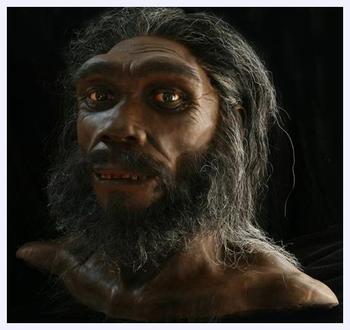


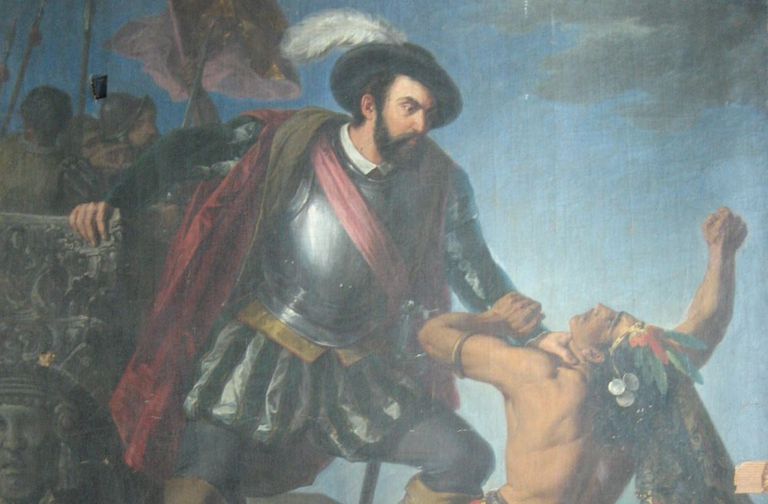
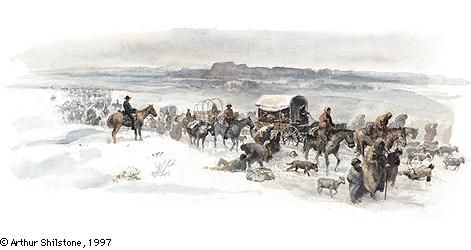
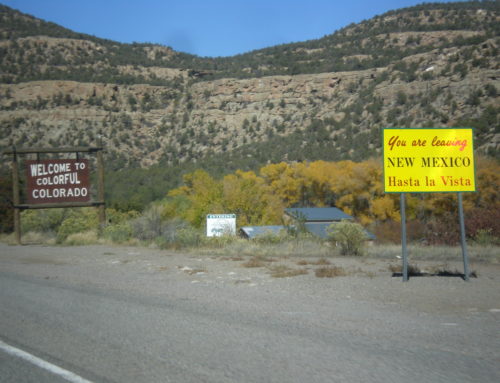
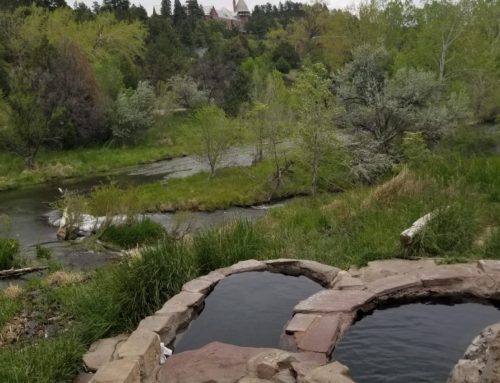
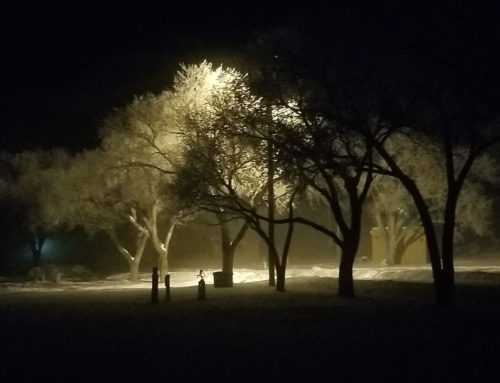


Leave A Comment